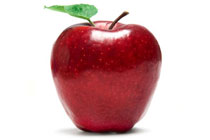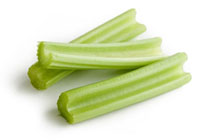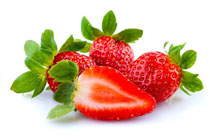A diet rich in fruits and vegetables offers many health benefits, including fiber, a variety of anti-oxidents, minerals, vitamins, additional unidentified phytonutrients, and water. The health benefits of conventionally-grown produce generally outweigh the risk of pesticide exposure. However, it is wise to minimize your pesticide intake, whenever possible, by avoiding the most heavily contaminated fruits and vegetables, and instead choosing to eat the least contaminated.
Pesticides are toxic to human and environmental health. They are designed to kill living organisms, such as insects, plants, and fungi that are considered “pests.” Cumulative exposure to pesticides has been associated with an increased risk of numerous health problems, including deficits in intelligence, learning, memory, and other neurological functions, ADHD, endocrine system disruption, cancer, and skin, eye and lung irritation, according to Sonya Lunder, Senior Analyst at the Environmental Working Group (EWG), and Andrew Weill, M.D., founder and director of the Arizona Center for Integrative Medicine and a renowned natural health and wellness expert. These health effects have also been documented by independent research scientists and physicians around the world. Much evidence shows that pesticides harm workers, damage the environment, and are toxic to laboratory animals. Fetuses and young children are especially at risk, since their bodies are less able to detoxify these chemicals than older children and adults. Even small amounts of pesticide exposure can be detrimental to the developing central nervous system.
Commodity crop corn used for animal feed and biofuels is almost all produced with genetically modified (GMO) seeds, as is some sweet corn sold for human consumption. Since GMO sweet corn is not labeled as such in U.S. stores, EWG advises those who have concerns about GMOs to buy organic sweet corn.
The “Dirty Dozen” refers to a list published by EWG of fruits and vegetables containing the most pesticides. The list was formed after a recent EWG analysis of pesticide residue testing data from the U.S. Department of Agriculture and Food and Drug Administration and ranks popular fresh produce items. The EWG’s 2011 Shopper’s Guide to Pesticides in Produce rankings are as follows:
“The Dirty Dozen”=Fruits and vegetables with the highest pesticide levels (Choose “organic” versions of these when possible):
- Apples
- Celery
- Strawberries
- Peaches
- Spinach
- Nectarines (imported)
- Grapes (imported)
- Sweet bell peppers
- Potatoes
- Blueberries (domestic)
- Lettuce
- Kale/collard greens
“The Clean Fifteen”=Fruits and vegetables with the lowest pesticide levels:
- Onions
- Sweet corn
- Pineapples
- Avocado
- Asparagus
- Sweet peas
- Mangoes
- Eggplant
- Cantaloupe (domestic)
- Kiwi
- Cabbage
- Watermelon
- Sweet potatoes
- Grapefruit
- Mushrooms
- At a minimum rinse all fresh produce under tap water for at least thirty seconds.
- The mechanical action of rinsing and rubbing (using your fingers, a vegetable brush, or clean soft toothbrush) produce under tap water is more effective at removing pesticide residues than the use of mild detergents or fruit and vegetable washes.
- Always remove the outer leaves of leafy vegetables and then rinse the vegetables thoroughly, several times.
- Peel hard-skinned produce, such as carrots, cucumbers, squash, apples, oranges, pears, etc. or rinse it well with warm water mixed with salt and lemon juice or vinegar.
- Try to purchase and serve certified or U.S.D.A. “organic” produce whenever possible. Organic growers do not use pesticides, synthetic chemicals or fertilizers, genetic engineering, radiation, or sewage sludge to produce their fruits and vegetables and avoid growing crops in contaminated and chemically-treated soil.
While it is always important to thoroughly wash produce before cooking, slicing, or eating it, keep in mind that many chemicals and pesticides have the ability to penetrate the skin and contaminate the interior of the fruit or vegetable. Washing and peeling produce will significantly reduce, but may not totally eliminate, exposure to these compounds.





















































References:
- Bouchard, M.; D. Bellinger; R. Wright; M. Weisskopf. “Attention-Deficit/Hyperactivity Disorder and Urinary Metabolites of Organophosphate Pesticides.” Pediatrics. 125: 1270-1277. 2010.
- EWG’s 2011 Shopper’s Guide to Pesticides in Produce. Environmental Working Group. Copyright 2011, Environmental Working Group, All Rights Reserved. June 13, 2011. http://www.ewg.org/foodnews/press/EWG Headquarters: 1436 U St. N.W. Suite 100, Washington, DC 20009 [ (202) 667-6982 ]
- “Full List-Environmental Working Group.” http://www.ewg.org/foodnews/list/
- Heit, Jeffrey, M.D.”Pesticides on Fruits and Vegetables.” MedlinePlus: Trusted Health Information for You. U.S. National Library of Medicine. NIH National Institute of Health. May 12, 2010.
- Krol, Dr. Walter J. “Removal of Trace Pesticide Residues from Produce.” Department of Analytical Chemistry: The Connecticut Agricultural Experiment Station. New Haven, Connecticut. June 4, 2007. http://www.ct.gov/caes/cwp/view.asp?a=2815&q=376676
- Lu, C.; K. Toepel; R. Irish; R.A. Fenske; D.B. Barr; R. Bravo. “Organic Diets Significantly Lower Children’s Dietary Exposure to Organophosphorus Pesticides.” Environ Health Perspect. 114 (2):260-263. 2006.
- “Pesticides in the Diets of Infants and Children.” National Academy of Sciences (NAS). Commission of Life Science. Washington, D.C. 1993. http://www.nap.edu/catalog.php?record_id=2126
- Zimmerman, Jess.” The ‘The Dirty Dozen’: Which fruits and vegetables have the most pesticides?” Grist Magazine, Inc. June 14, 2011.



{ 3 comments }
I buy from the grocery store but only buecase we don’t have markets where I live. It’s a small community so all the local farmers sell their items through the store! Otherwise I would buy from them directly. If the shelves are empty of local produce I try to buy other organic & fair-trade produce. Organic bananas (example) are only 20p more than the non-organic ones. I also prefer homegrown vegetables and herbs etc
I’m so glad this is going around on a bunch of dfeefrint blogs. Everyone needs to know! I do follow the dirty dozen and clean 15 when I’m shopping but cost also factors into it. Sometimes I’ll even forgo buying something because I can’t afford to buy the organic option, which is really disappointing sometimes. I’m not super strict about it because it’s extremely hard shopping for a large variety of fruits and veggies that we would normally eat in a week in a small town grocery store, but we do the best we can and avoid the major ones. I do think it’s important especially for little ones to avoid the chemicals they put on food. Living in an agricultural town and living on an orchard at one point I’ve seen the amount of sprays and things they put on food and it really is sickening to see farmers completely covered in chemical suits with special masks so that they can breathe so that they can put these things on the food we eat and feed to our children. No thank you.
I was talking to a Nurse and she told me about this. So when she left I check it out . I was surley surprised .
Comments on this entry are closed.